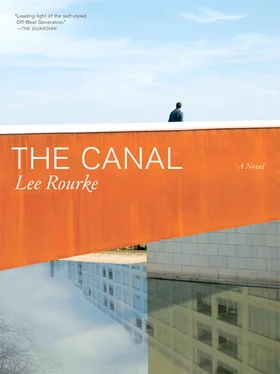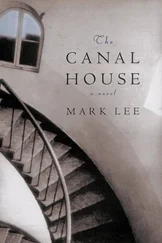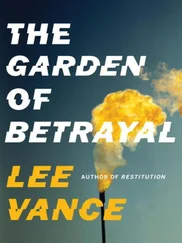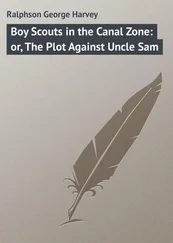My gaze wandered to the whitewashed office block. The man who usually wore the slim-fitting shirts and ties was outside the office, he was leaning by a pillar on the company esplanade. He was smoking a cigarette and staring into the murky water. I watched him. I watched him because I knew now that she was watching him, too. Soon he finished his cigarette and flicked it into the canal. As he was about to turn and saunter back into the office he was joined by the woman whose desk he would always walk over to, countless times throughout the day, back and forth, back and forth. She stood close to him. He offered her a cigarette, she took it from him, he lit himself another, sharing his light with her. It didn’t look like they were talking. It was hard to see, but it was obvious that they both had the same thing on their minds. She began to cough beside me, the sort of little coughs people do when they are agitated.
A military Chinook passed by over the rooftop of the expensive flats above the offices. It was quite high, nose tilted downwards, its twin rotor blades slicing through the air. I watched it. It was on a diagonal trajectory across the city — on its way, most probably, to the barracks on City Road. The HAC Grounds. I instantly thought of the makeshift morgue that was erected there the same day of the London bombings. I thought about the body parts: all that flesh and human muscle decaying under the white canvas of the marquees. The stench must have been unbearable in there. The HAC Grounds sits next to Bunhill Fields, a burial ground from the Saxon times and, since 1685, a cemetery that was once used for victims of the plague, and later on for nonconformists and some infamous writers and poets.
I used to walk to Bunhill Fields with my father from time to time. He liked to sit and feed the pigeons in there, ignoring the signs pinned to the railings urging people not to. Every time, when the feed was all finished, and I had asked him if there were really bodies in the numerous sarcophagi scattered about, he’d tell me about how the cemetery got its name. He would speak quietly, telling me how it was originally called Bone Hill and that Bunhill is a modern bastardisation of that name. He would then fall to a mere whisper as he told me about the countless cartloads — over one thousand in total — of dried bones that were taken from St Paul’s charnel-house around 1549 and dumped on the boggy fen and moor that once stood on that very spot under our feet. A wondrous hill of dried bones eventually rising from the marshes, big enough to build three windmills on it — which were subsequently demolished when urgent land was needed for the myriad plague victims that had been piling up on every street corner. Each time he would end his macabre tale with the same words, a wry smile forming in the corner of his mouth: “We’re literally walking over the London dead.”
It would send a shiver through me, but eventually, over time, I got used to it and it soon became a running joke between us. It’s funny to me now. I still think of those words most days when I’m walking through the city, to the shops, or waiting at bus stops. When I’m standing still with nothing to do or laying flat out on the grass looking up at the trees and sky, I still think of the London dead beneath my feet.
I shuffled my feet in the dirt. I began to think about those countless men who worked to build the canal. The long stretch of water making up the whole of the Regent’s Canal, beginning at Limehouse Basin and incorporating Wenlock Basin by the whitewashed office block, the 886 metre Islington tunnel, and eventually ending at Camden, where it joins the Grand Union Junction at Little Venice. It was opened in 1820. At the time, the digging of the Islington tunnel was the utmost in engineering technology and endurance. The canal’s original engineer, James Morgan, designed the tunnel after a competition failed in its attempt to lure a suitable winner into designing it. Building began in 1814 and by the first month of 1815 over 140 yards of the tunnel had been built, using a technique of drilling shafts down to tunnel level from street level above. By March of the same year, 250 yards had been built and four large shafts had all been linked to the tunnel from above. These shafts served to lower men and equipment into the tunnel and also to remove earth and rock. The tunnel is more or less completely straight, a feat that James Morgan was applauded for. All 960 yards or 886 metres of it was finally completed in 1818 and cost almost £40,000 to build.
I’d read all that in an interesting article about the building of the Regent’s Canal, although I now forget where I read it. It might have been in a newspaper, the Hackney Gazette, or it might have been on the internet at work when I was bored and should have been occupying my time doing something a little more productive. It was one of those stories that always sticks in your mind for no apparent reason. Like I said, I first started walking to the canal one day out of boredom — nothing else. It’s not that I have ever shown any interest in canals before that day. I often wonder now why this particular story should stick in my head the way it does. It’s not even a great story — it’s nothing that special. It touched something within me. There’s so much about myself that I do not understand. I remember reading how the barge owners used walk their barges through the Islington Tunnel by lying on their backs on deck and literally walking along the walls of the tunnel to push it through to the other side. This antiquarian technique was called legging . All that toil and trouble, all that walking; it’s hard to believe it even happened today. It’s hard to believe the misery some people endured for us to be able to live our lives.
I wonder if all the commuters — the cyclists, the joggers, the walkers, the drifters and drunks — ever cast a thought to those who built it all those years ago. I wouldn’t hold my breath.
She continued to cough. She was clearly agitated and something was obviously bothering her. She was staring steadfastly ahead to the other side of the bank at the two office workers. I watched her looking at them. At him, I realised: watching his every move, aware of everything he did. If he rolled his eyes she noticed it, if he ran his fingers through his hair she noticed it, and if he blinked she noticed that, too. It was him she was looking at, and it dawned on me finally: he was the sole reason she came to the canal, and to our bench in particular. It was him she was interested in and not me.
They must have known each other. No one would actually spend that amount of time watching one particular stranger. I watched her, trying to be discreet, although it didn’t seem to matter. Suddenly, it was as if she was there standing next to them, right there across the murky water, feeling what they felt, speaking the same words, smoking the same cigarettes. She was over there with them. I watched her. It was all I could do, all I could ever do. Then her breathing became heavier, in and out, in and out. She resigned herself to the tryst across the way, out of her reach, so close she could almost touch them it seemed, on the cold concrete of the small company esplanade. I could have been sitting on a bench on the other side of London for all she seemed to care. For that moment, I was sure that I didn’t exist. That I was hidden in some sort of dirty, grimy fog. I had to try and get her back to me somehow.
“Those youths were up to no good earlier …”
She continued to look across the murky water at the couple. I continued.
“I said, those kids were up to no good today. The same ones who attacked me that day. Do you remember?”
“Pardon …?”
“Those four youths. The Pack Crew. You know?”
Читать дальше












